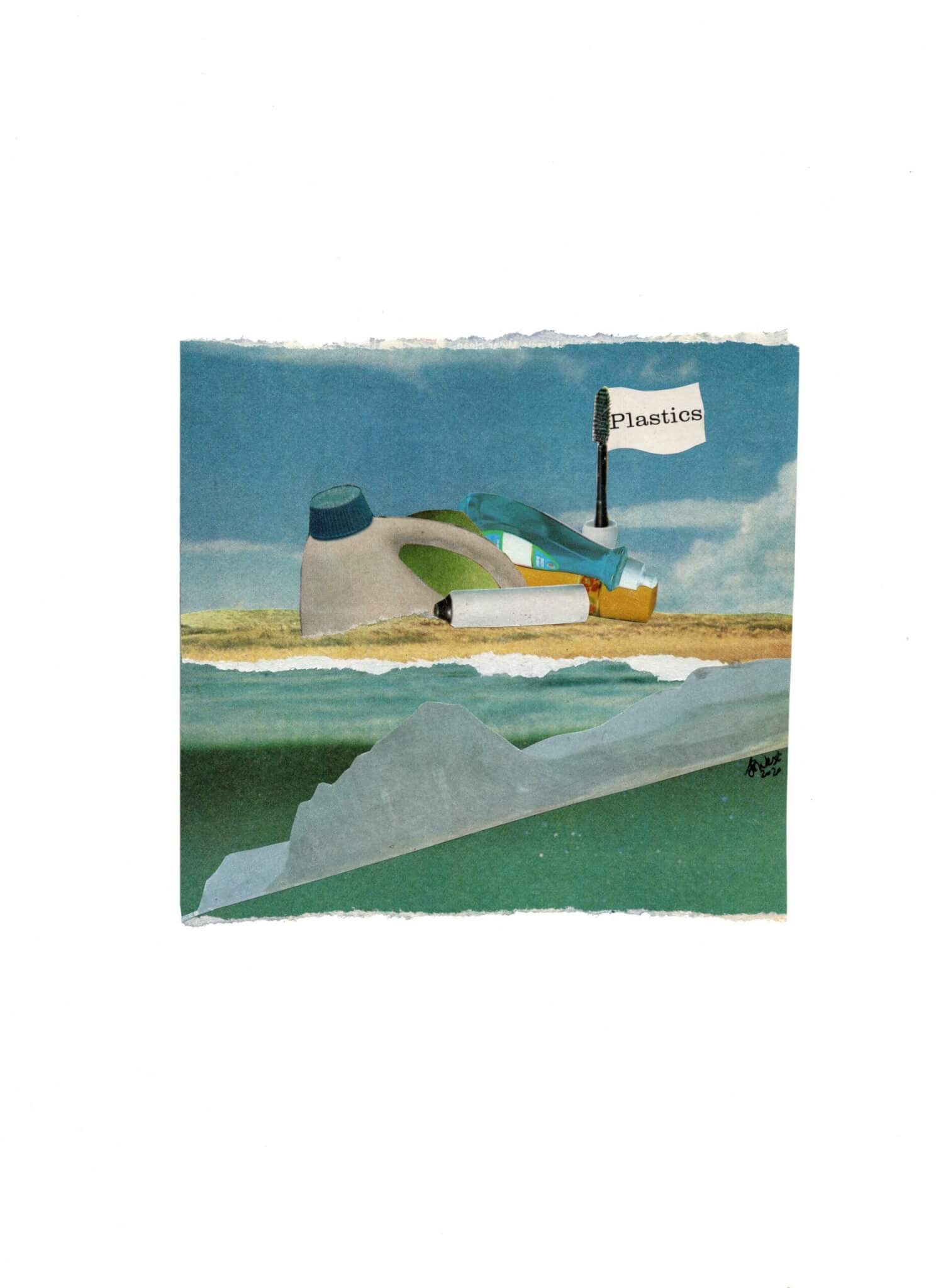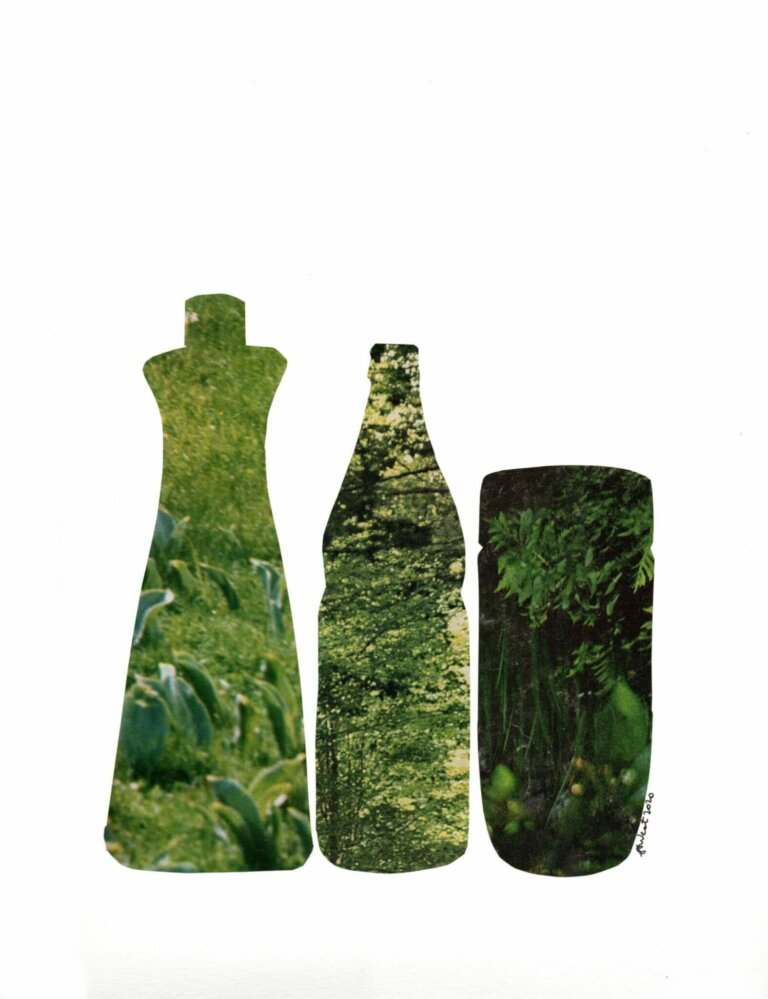
TEXT BRIANA DODSON @bri_dodson
ARTWORK JILLIAN WEST @electricblanketnow
Myth 1: I can throw all recycling into a blue bin and the city will take care of it.
If you’re not familiar, single-stream recycling refers to a system in which all paper fibers, plastics, metals, and other containers are mixed in a collection truck instead of being sorted by the individual at home. This became very popular in the early 2000s and is still practiced by some of us today because. Who doesn’t want to have to have to think about sorting their recycling? According to a survey conducted by the American Forest and Paper Association, these single-stream programs went from covering 29 percent of American communities to 80 percent from 2005 to 2014.
While we obviously love having an extra layer of convenience added to the recycling process, simply tossing your trash into a bin and “hoping for the best” may actually be doing more harm than good. That one thing you aren’t too sure of could actually prevent everything in your bin from being recycled at all even though times may be changing. In the past few years, some communities have been shifting away from this practice, partly in response to China’s economic changes.
According to Waste Management, a leading provider of comprehensive waste management, offering services such as garbage collection and disposal, recycling and dumpster rental, about a quarter of everything consumers place in recycling bins ultimately can’t be recycled by the programs that collect them. Things like food waste, low-grade plastics, etc., are not only materials unable to be recycled, but are also space wasters for items that can get jammed into machinery and pose hazards to workers.
This recycling practice has also led to a significant amount of contamination, which has a major impact on the quality of recyclables. For all you rule breakers out there (you know who you are) tossing almost everything from food to liquids into those bins, even though they have rules stated right on them, very much degrades the quality of your recyclable items. As a response to some of these quality issues, China – once the largest importer of recyclables – recently issued The Green Sword Policy, new rules on the types of materials it will accept, including a 0.5% max on recycling contamination. To put that into perspective, that means the 25% contamination rate we see today in our own neighborhoods would basically need to reach zero in order for them to be recycled. Translation: Anything above that 0.5% contamination is trash.
Here’s how you can start: Avoid mindlessly throwing your trash into recycling bins. Pay attention to what is going into the bins and avoid dumping foods and liquids in with recyclables at all. Check with your waste management provider to see what can and can’t be recycled.
Myth 2: If a product is made of more than one material, trash it. It can’t be recycled.
According to Waste 360, 62 percent of U.S. households (13,300 different communities across 49 states, and 82 of the 100 largest cities in the country) have access to carton recycling through curb side and drop off programs that utilize machines that can break down items such as toys, milk cartons, etc. Many manufacturers are trying to do their part by making packaging that’s easier to recycle, which is a good step in the right direction. Also, an increasing number of recyclers are equipped to deal with “less desirable” plastics like grocery bags or items containing unknown resins which are found in many household items. It’s important to note that not all plastics are created equal. Of the seven types, only three are safe to recycle (HDPE, LDPE and PP), and two you need to be extremely cautious of when recycling (PET and PC). While this does make recycling an easier obstacle to handle and provide you with a wider range of products that can be recycled, it doesn’t mean you can toss anything you want into a blue bin.
How you can help: Buy recyclable items (there are usually symbols that delineate what can and can’t be recycled—note the aforementioned plastics above). When you do this, you’re also incentivizing manufacturers to use more post consumer waste.

Myth 3: Recycling has no real benefits to the planet.
This one hurts because it simply isn’t true. We’ve heard the news reports about collectors tossing piles of recyclables into landfills and the fuel used by the recycle trucks. Add on the idea that most people don’t actually know what happens to their recycling after they put it on the curb, and it’s not too surprising that there’s a lot of skepticism around the benefits of recycling. However, according to the Environmental Protection Agency, there are clear benefits to recycling. Recycling one aluminum beverage can save enough energy to run a 14 watt CFL bulb (60 watt incandescent equivalent) for 20 hours, a computer for 3 hours, or a TV for 2 hours. The energy saved from recycling one glass bottle can operate a 100-watt light bulb for four hours. It also causes 20% less air pollution and 50% less water pollution than when a new bottle is made from raw materials. These are just a few examples.
Myth 4: Landfills will solve all waste management issues
Despite what you might have heard, landfills are not the solution to our waste management problems. One reason being that they ignore the cost of waste, as well as miss opportunities to preserve resources and also pollute the ground, water and soil. Polluted soil means less nutrients in our food that grows in that soil. What’s even more dangerous is that the mixture of groundwater and waste can quickly de-oxygenate water. When this mixture reaches rivers or lakes, aquatic life is in serious jeopardy. In order to send that much trash consistently to landfills, we also need a large amount of heavy transportation which, you guessed it, means even more pollution.
Myth 5: Biodegradable waste is eco-friendly
This is a really common assumption, but sadly also a huge myth. First, let’s talk about the term “biodegradable.” You could say that terminology may be a bit greenwashed. For those of you who may not be familiar, greenwashing is the misrepresentation of information to falsely represent environmentally responsible practices or behavior. Unfortunately, this happens quite frequently in the media when talking about sustainability. There’s no universal definition or standard for the term, meaning what’s considered biodegradable, or passes as biodegradable, can be very different depending on who you’re asking. And companies take full advantage of that—and consumers. Due to this lack of clarity, choosing products to buy (and recycle) could be a great sustainable choice or utterly destructive.There’s an assumption that biodegradable waste doesn’t need to be recycled because it breaks down naturally in landfills, however, biodegradable waste has its own fair share of negative effects. This waste releases greenhouse gases in the forms of methane and carbon dioxide, and when the greenhouse gases leak into our atmosphere, they take their toll on the environment and play a huge role in contributing to global warming. Many propose the alternative of using methane for energy, and according to Rodale News’ Emily Main, biodegradable plastic releases the most methane in the average landfill. However, biodegradable waste unfortunately decomposes too quickly to be harnessed for energy.
What you can do: Reduce the amount of packaged goods you buy. Think farmer’s market! Opt for a reusable bag (the options are endless) to shop with while you purchase your fruits and vegetables sans plastic.

Myth 6: One person cannot make a difference
I know what you’re thinking… I’m just one person. What I do can’t possibly make a difference. And you’d be exactly right—with that attitude and no action. But you hold so much more power than you think! Where would we be if we all thought our choices wouldn’t make a difference? Recycling one ton of plastic bottles saves the equivalent energy usage of a two person household for one year, and just like recycling one aluminum has a tremendous impact, as mentioned above, the possibilities of what one human being on this earth is capable of is pretty spectacular! Your one positive action can create a domino effect, impacting many other variables and potentially inspire others at the same time.
However, just like one positive can bring more positive, one person’s negative action can bring even more negative impact. Recycling can only be as effective as each of us allows it to be. So think before you toss!
| Cookie | Duration | Description |
|---|---|---|
| cookielawinfo-checkbox-analytics | 11 months | This cookie is set by GDPR Cookie Consent plugin. The cookie is used to store the user consent for the cookies in the category "Analytics". |
| cookielawinfo-checkbox-functional | 11 months | The cookie is set by GDPR cookie consent to record the user consent for the cookies in the category "Functional". |
| cookielawinfo-checkbox-necessary | 11 months | This cookie is set by GDPR Cookie Consent plugin. The cookies is used to store the user consent for the cookies in the category "Necessary". |
| cookielawinfo-checkbox-others | 11 months | This cookie is set by GDPR Cookie Consent plugin. The cookie is used to store the user consent for the cookies in the category "Other. |
| cookielawinfo-checkbox-performance | 11 months | This cookie is set by GDPR Cookie Consent plugin. The cookie is used to store the user consent for the cookies in the category "Performance". |
| viewed_cookie_policy | 11 months | The cookie is set by the GDPR Cookie Consent plugin and is used to store whether or not user has consented to the use of cookies. It does not store any personal data. |